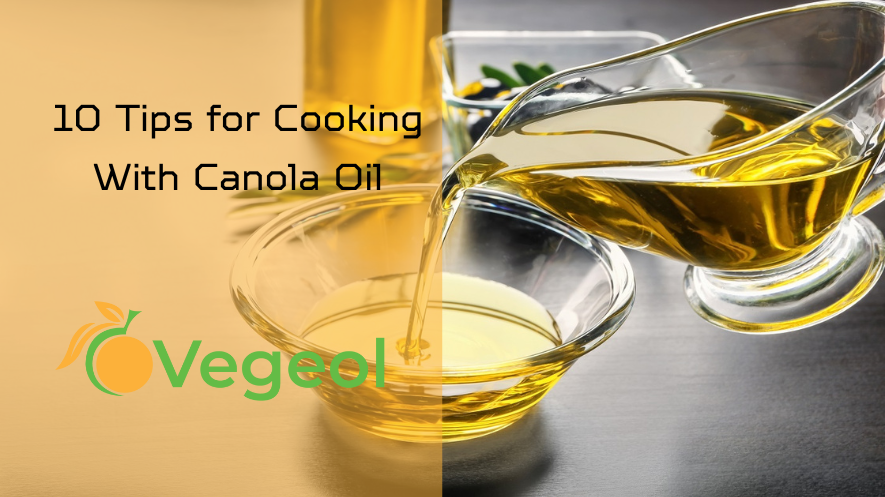Discover the benefits of canola oil, a versatile and heart-healthy cooking oil known for its mild flavor, high smoke point, and rich omega-3 content. Learn how canola oil can enhance your culinary creations and contribute to a balanced diet
Because of its many uses and health advantages, canola oil is a common fixture in many kitchens. On the other hand, bad storage can cause nutrients, flavor, and freshness to be lost. You can preserve oil at its best for as long as possible by following the instructions in this tutorial.
Why It’s Important to Store Canola Oil Properly
Canola oil must be stored properly to preserve its quality. This oil can go rancid when exposed to adverse conditions, which means it loses its flavor and health advantages. The processes of oxidation and hydrolysis, which are sped up by heat, light, and air, cause rancidity. You can increase oil’s shelf life and make sure it continues to be a nutritious part of your diet by storing it properly. Not only is fresh oil safer to use while cooking, but it also produces less hazardous components when it gets spoiled. Maintaining the freshness of your oil may be achieved simply and efficiently by learning and using the right storage procedures.
Ideal Storage Conditions for Canola Oil
A Look at Temperature
Canola oil’s shelf life is significantly influenced by temperature. It needs to be kept cold and steady in storage. This oil should ideally be stored in a pantry or cupboard far from heat sources like stoves and ovens. Elevated temperatures hasten the deterioration process, leading to an earlier oil failure. For the best results, this oil should be stored between 50°F and 70°F (10°C and 21°C). You may want to consider refrigerating the oil if you reside in a warmer climate. Refrigeration does not change the oil’s quality, however it may make it hazy. Just wait until the oil reaches room temperature again before using it.
The Effect of Exposure to Light
Canola oil’s quality can be greatly impacted by light, especially sunlight. The breakdown of the oil’s components is caused by photo oxidation, which is brought on by exposure to light. Store this oil in a dark area, like a pantry or cupboard, to avoid this. Select a container that blocks light if at all possible. Opaque or dark glass bottles are the best options for reducing light exposure. Try switching to a dark bottle for your oil if it comes in a clear one. This little action can help increase the oil’s shelf life and maintain its freshness.
The Greatest Canola Oil Storage Containers
The lifetime of canola oil can be impacted by the kind of container you use to store it. Dark-colored glass bottles work particularly well to shield the oil from light. Since stainless steel containers don’t react and shield the oil from light and air, they’re also a great option. Plastic containers should be avoided since over time they may absorb chemicals into the oil. Furthermore, plastic is more air-permeable, which might hasten oxidation. Make sure the container is sealed at all times. Air exposure speeds up oxidation, which causes rancidity. Maintaining the freshness of your oil can be greatly impacted by choosing the appropriate container.
Indices That Your Canola Oil Has Degraded
In order to prevent eating rancid oil, it’s critical to identify when canola oil has gone bad. The most noticeable indication is a shift in scent. The aroma of fresh oil is mildly nutty and neutral. It is best to throw it away if it smells bitter, sour, or like crayons. A shift in color is another clue. Canola oil ought to be light yellow and transparent. If it seems hazy or has turned considerably darker, it can be spoilt. Lastly, if you’re still dubious, taste a small quantity. The flavor of rancid oil will be strange and disagreeable. It’s possible to make sure that using this oil is always safe by keeping an eye out for these indicators.
Advice on Increasing Canola Oil’s Shelf Life
Use these easy suggestions to prolong the freshness of your canola oil. Firstly, to reduce exposure to air, always carefully close the bottle after each use. Keep the oil out of direct sunshine and heat sources by keeping it somewhere cold and dark. If the oil isn’t already in one, think about moving it to a stainless steel or dark glass container. If you don’t use this oil often, buy it in smaller quantities to cut down on how long it sits on your shelf. Lastly, avoid letting food particles or water come into contact with the oil since this might hasten the deterioration process. By following these procedures, you can keep your oil safe and of high quality.
Conclusion
Canola oil must be stored correctly to maintain both its nutritional content and freshness. You may increase the shelf life of your oil by managing temperature, light exposure, and container selection. Maintaining the health of your cooking oil requires that you periodically inspect it for indications of deterioration and adhere to sensible storage guidelines. You can extend the benefits of fresh oil by following these procedures.


